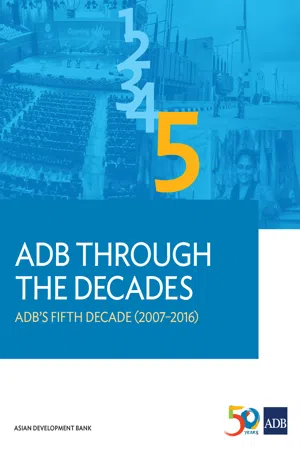
ADB Through the Decades: ADB's Fifth Decade (2007-2016)
- 138 Seiten
- English
- ePUB (handyfreundlich)
- Über iOS und Android verfügbar
ADB Through the Decades: ADB's Fifth Decade (2007-2016)
Über dieses Buch
Asia proved resilient to the effects of the 2008-2009 global financial crisis, but sustaining rapid growth became more difficult afterward. Development challenges intensified, the global development agenda became more ambitious, and new sources of development finance emerged. This volume shows how the Asian Development Bank (ADB) continued to reform in order to meet these challenges. A new long-term strategic framework, Strategy 2020, was launched in 2008, to respond to the changing needs of the region. A midterm review of Strategy 2020 was released in 2014, further refining and adjusting priorities in order for ADB to remain relevant and responsive to borrowers. Various organizational changes were introduced, internal business processes were improved, and several new instruments were adopted as part of ADB's efforts to become "stronger, better, faster." ADB's lending capacity expanded significantly, with the fifth general capital increase in 2009, followed by the unique and groundbreaking combination of the Asian Development Fund portfolio with the ordinary capital resources balance sheet approved in 2015. Lending reached record levels in 2015 and 2016, exceeding the earlier spike in 2009 when ADB had responded to the needs of countries affected by the global economic crisis. ADB also enhanced its accountability and results orientation, becoming the first multilateral development bank to adopt a corporate results framework in 2008.
Häufig gestellte Fragen
Information
APPENDIXES
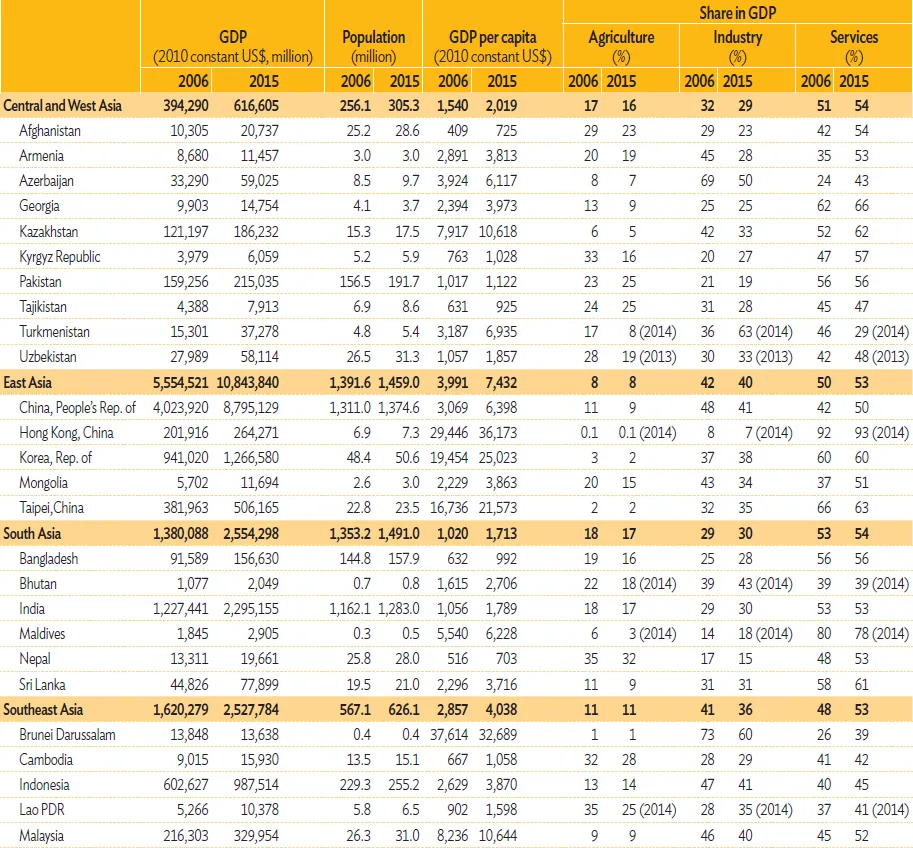
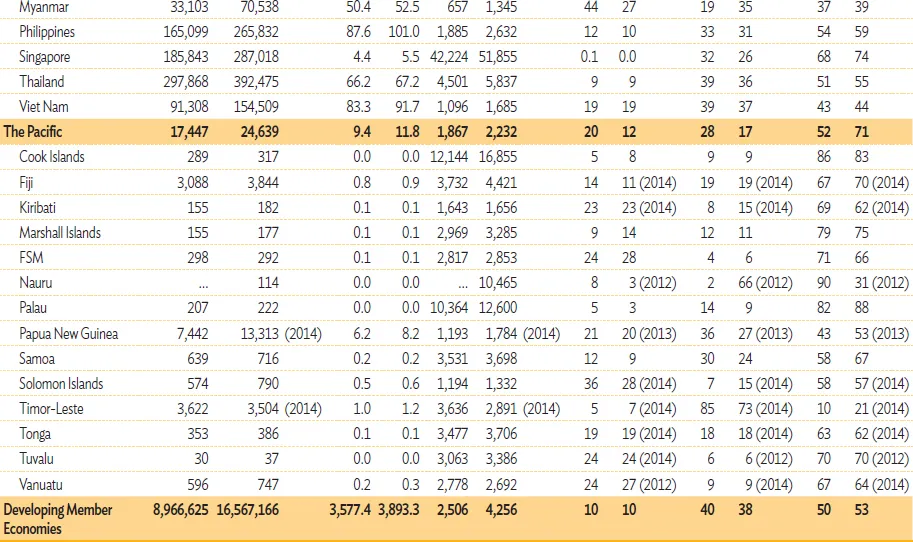

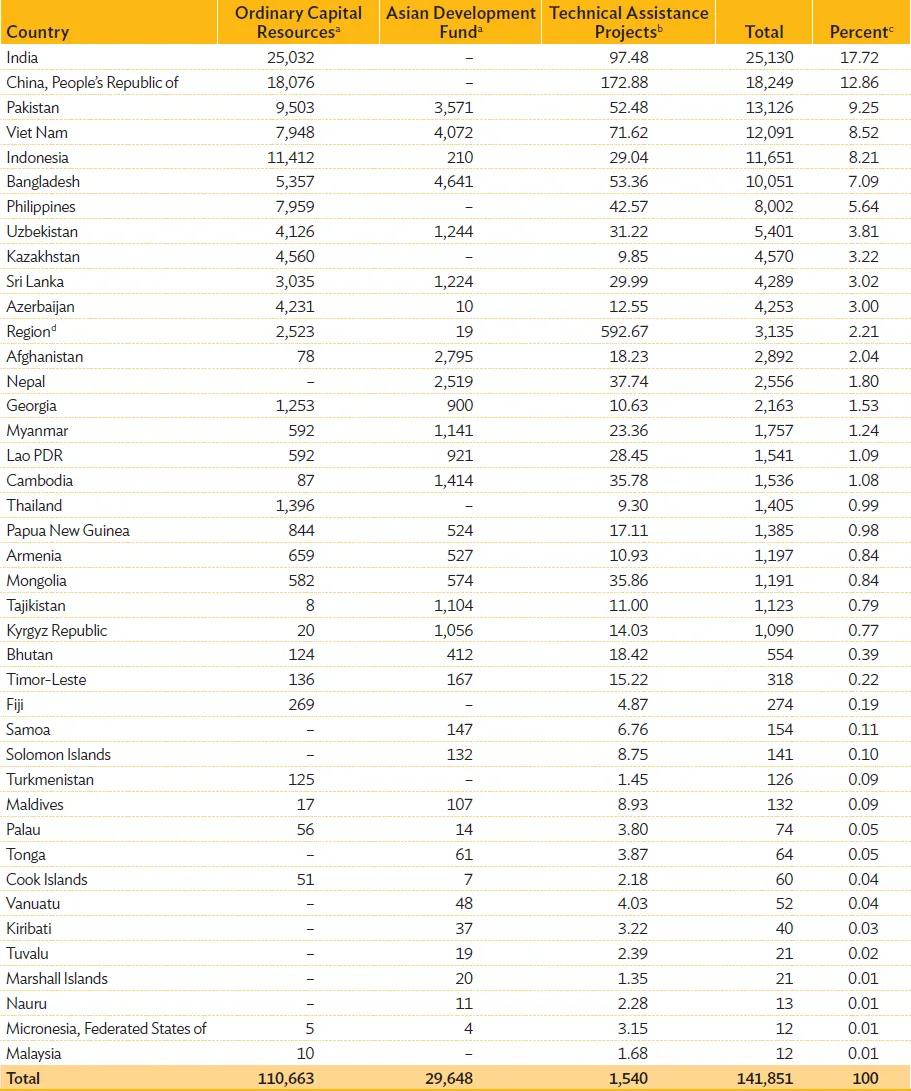
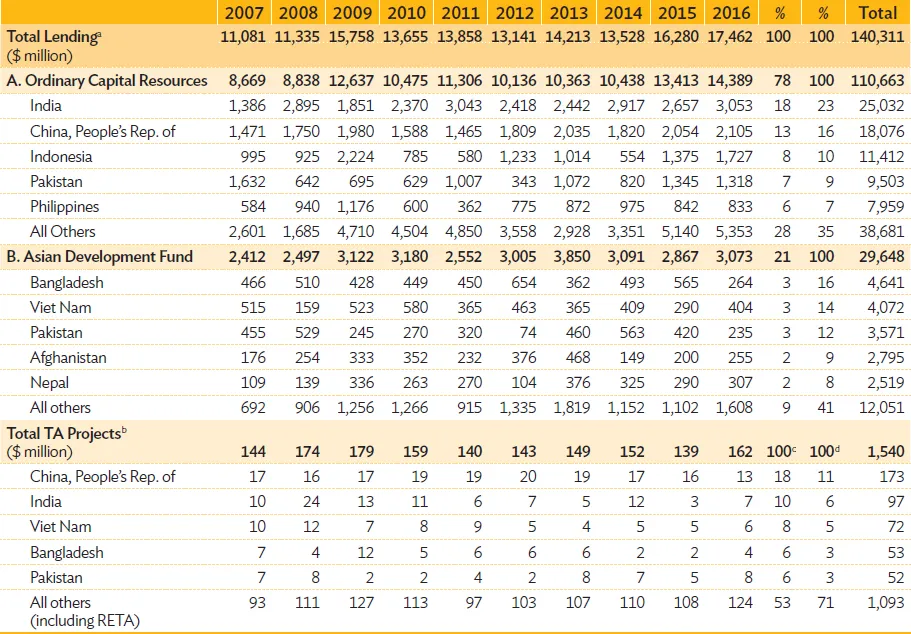
Key ADB Milestones, 2007–2016
2007 | • Georgia joins ADB |
• Extensive consultations are launched during the 40th Annual Meeting for a new Long-Term Strategic Framework (LTSF) based on the Eminent Persons Group report | |
• ADB approves new approach to achieve development effectiveness in weakly performing countries | |
2008 | • The Board of Directors approve the new LTSF for 2008–2020 called Strategy 2020, reaffirming ADB’s focus on poverty |
• ADB becomes the first multilateral development bank to adopt a corporate results framework | |
• The First Development Effectiveness Report released in November | |
• The ninth replenishment of the Asian Development Fund (ADF) starts (and became effective in 2009) | |
• Review of graduation policy is completed | |
Review of technical assistance operations is completed | |
• A working group reviews the independence and effectiveness of the Operations Evaluation Department, later renamed Independent Evaluation Department (IED) | |
• ADB approves a new evaluation policy to further strengthen lED’s independence | |
• ADB reviews the operations of its resident missions to assess the achievement of their objectives and expectations | |
• Strategy on human resources is reviewed | |
• Responding to rising demand from member countries, ADB mainstreams the multitranche financing facility, one of the instruments implemented on a pilot basis since 2005 | |
• ADB conducts a comprehensive inventory and review of all existing strategies and policies and their relevance to achieving Strategy 2020 | |
• The Regional and Sustainable Development Department (RSDD) is reorganized to create a climate change unit; an Agriculture, Rural Development and Food Security team is formalized | |
• Around $4 billion additional resources are allocated to address food, commodity, oil price, and global financial crises in the region | |
• Two loans to state-owned enterprises without sovereign guara... |